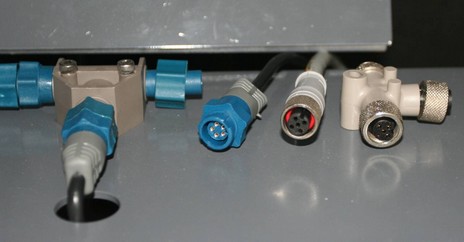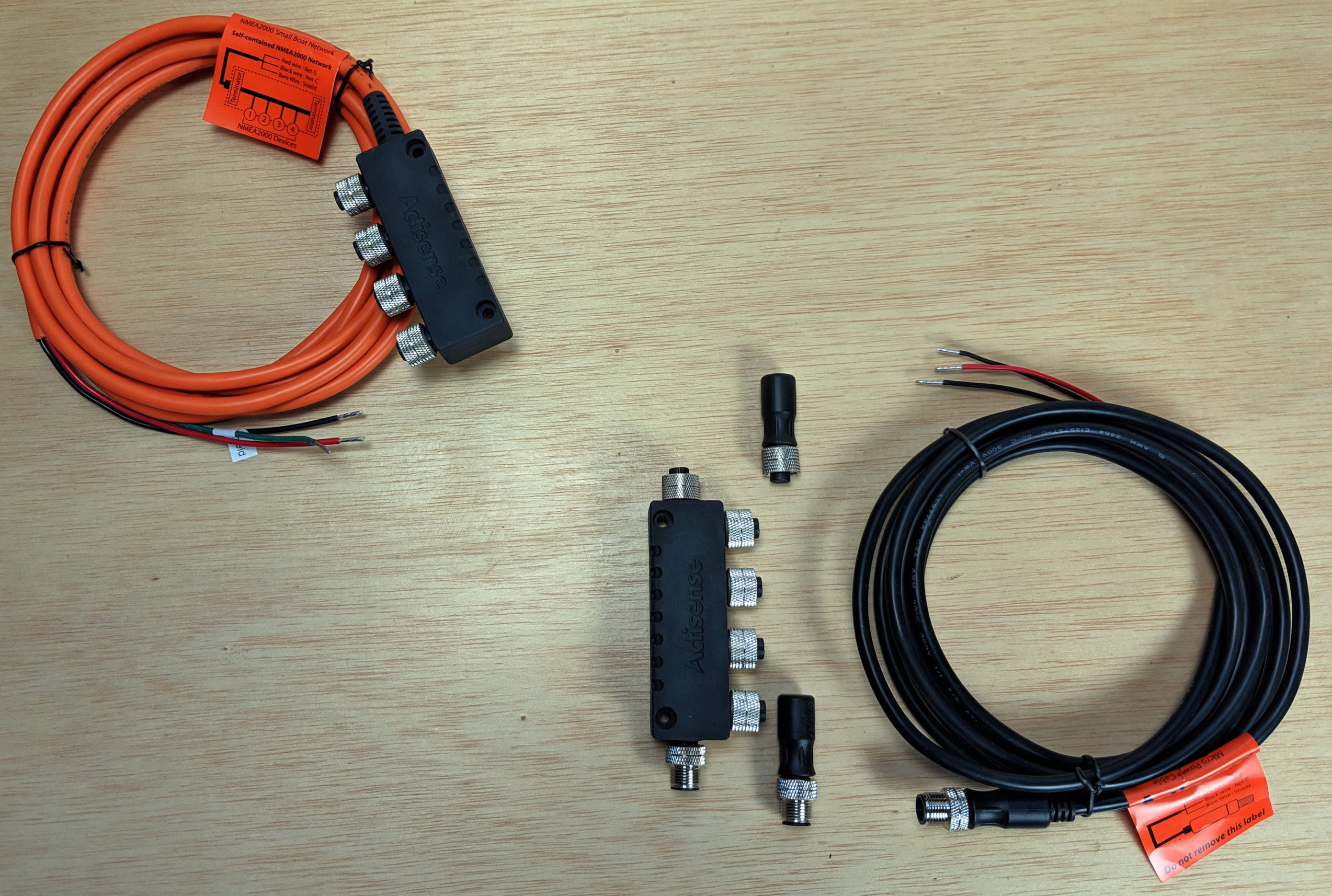LowranceNet 2, good news for NMEA 2000

Well, it was odd really; the very day I blogged about how nothing seemed to be happening with NMEA 2000 cabling issues and how well a proprietary LowranceNet backbone worked with a standard NMEA 2000 backbone (annoying a couple of you), I learned that changes are in store for both. Good changes! The information came in the form of a NMEA press release titled NMEA 2000 Working Group Completes Its Work on Cable and Connector System. It’s not online, and was darn vague anyway; it took me a few e-mails to tease out the following:
* After 18 months of studying the possibility of an alternate lighter, cheaper NMEA 2000 cable and connector standard, the subcommittee decided it wasn’t necessary. The main reason given is that Molex, a prime supplier of the connection hardware, promised a “substantial price reduction” in the existing cables and connectors (aka “the physical layer”). That’s the Micro version of the 2000 physical layer seen upper right in the picture (bigger here), and sold by Maretron.
* The current Micro T connector seen in the photo retails for about $21, and a 3 meter made-up cable is $44. That’s actually not all that expensive when compared to some marine electronics proprietary cables, but it has put off some boat builders and electronics installers. The new Molex gear—which, by the way, is also sold as DeviceNet— will probably have more plastic parts, but will be something like 25% less expensive. That’s good.
* Perhaps even better, in the same NMEA press release Lowrance announced that its proprietary twist on connectors and odd pin layout (seen above) are history. Next year all LowranceNet connectors will be the NMEA approved screw on variety. That even includes the plugs on back of their displays, which is not actually required by the standard (so far, only Maretron makes devices with a standard NMEA 2000 plug on the back). Lowrance will of course provide adaptors so that all current LowranceNet gear can adapt easily to the new stuff.
* And, finally, Lowrance says that it anticipates making this change without raising prices. Which is really something given that several current LowranceNet sensors cost $50 total, which includes almost 12’ of cable, a T connector, and the sensor!
Why did NMEA take a year and half to say NO to a 2nd cable standard? Why did Lowrance offer its own 2nd cable standard for just a year? I don’t really understand what happened, but the future (perhaps the result?) looks good. Pretty soon there will be several choices in approved NMEA 2000 cabling—from economical smaller boat grade to industrial workboat/megayacht quality—and they’ll all plug and play together.













Just another data point for NMEA 2000 cable pricing:
Maretron’s Micro T currently retails for $17.64, and the 3 meter made-up cables list for $26.31,
with nickel-plated brass fittings and gold plated contacts.
I’m glad the working group has settled on this as the single standard, as it’s cost effective, shielded, and watertight.
(and yes, I do work for Maretron)
Thanks for the gentle correction, Frank. I thought I looked up the $21 and $44 prices in the latest Maretron price list, but I got them wrong.
In dire need (like yesterday) of a Lowrance “blue” to Lowrance “red” male-male adapter cable. Possibly could make one by cutting off the end of a “blue” and putting on a Micro-C connector, but don’t know if the wire colors are the same; and if wire colors are not the same, what is the cross-reference (connect what-to-what, in other words). Apparently, Lowrance won’t have a cable ready until end of march (I can’t believe this!) but Three Rivers Marine Electronics in Pennsylvania is advertising one – cost about $18.00.
John,
Lowrance cables are standard n2k color coded.
Red – Net-S
Black – Net-C
White – Net-H
Blue – Net-L
Clear – Drain
You could also use a field attachable micro-c terminal instead of splicing a micro-c cable with connector.